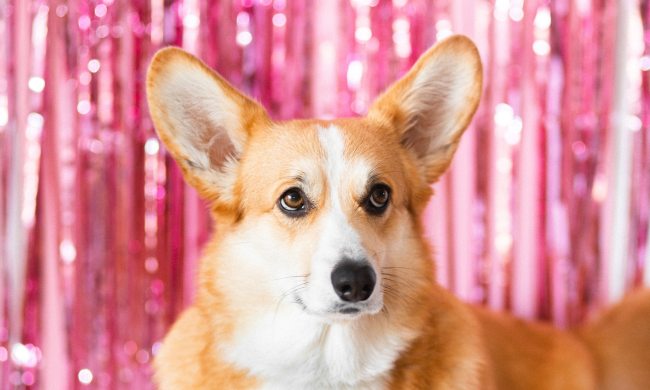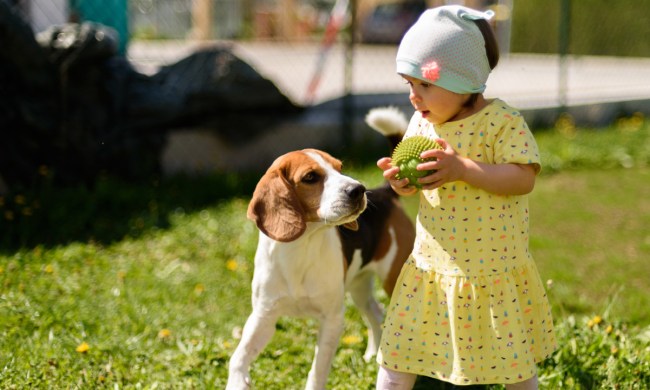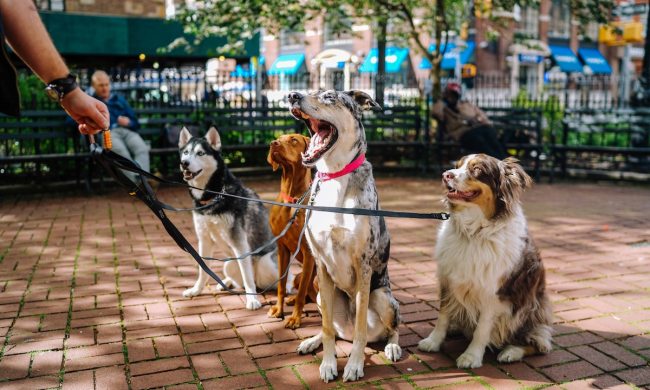Thanks to outdated misconceptions and unsubstantiated claims, the Doberman pinscher’s reputation is a mixed bag. While breed aficionados tout their loyalty, Dobermans — affectionately called Dobies — are banned or restricted in several states. (Dobermans have been targeted by anti-breed legislation in Georgia, Iowa, Kansas, Kentucky, Louisiana, Michigan, Mississippi, Missouri, Montana, Nebraska, North Dakota, Ohio, South Carolina, Tennessee, and Wisconsin.) Let’s debunk the three most common myths about Dobermans, explore what makes them false, and learn more about what you should actually expect if you decide to become a Dobie owner.
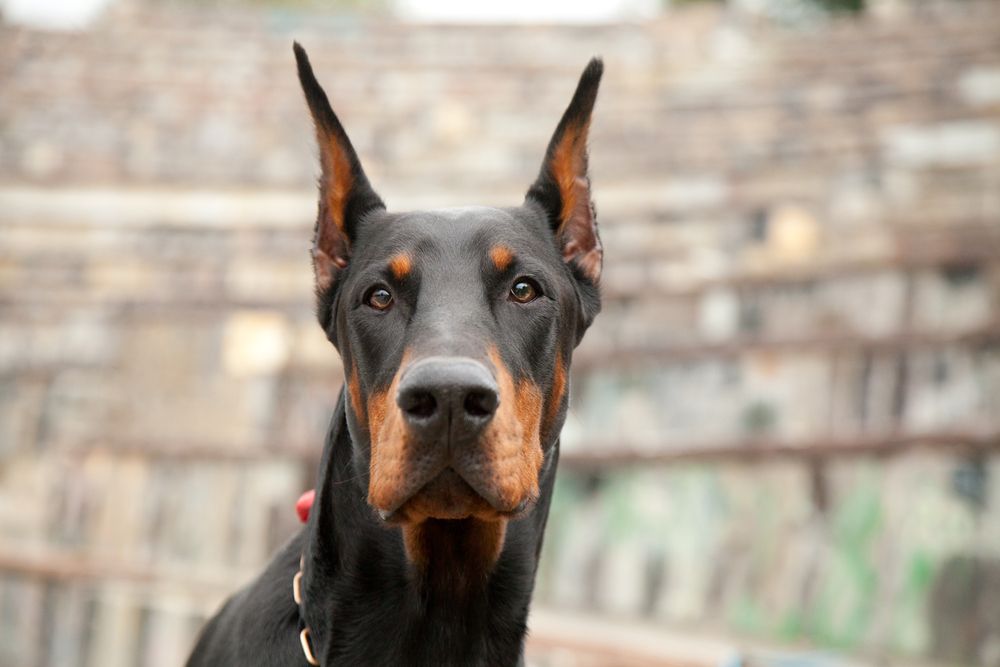
Myth #1: Dobermans will eventually turn on their owners
This particular myth got its start in the outdated belief that the Doberman’s brain will continue to grow, eventually exploding inside its relatively small skull and causing the dog to attack his owner. The myth later expanded to include pit bulls, but we now know that both breeds’ brains grow at the same rate as other breeds’. Furthermore, if a dog’s brain actually exploded inside its skull, the animal in question would die instantaneously instead of turning on his owner.
The truth
According to the Doberman Pinscher Club of America’s John T. Brueggeman, “The Doberman has always been, for the most part, extremely loyal and very trustworthy to his master to a greater extent than most other breeds.” Naturally loyal, the Doberman forms a fierce, protective bond with family members. Although they tend to have a favorite person, Dobies are dedicated to the welfare of their entire family unit and don’t turn on their owners without provocation. There is a slightly increased chance that a Doberman will physically defend his family against real or perceived threats, but he’s highly unlikely to attack his owners.
Myth #2: Dobermans aren’t safe around children
Because so many people view Dobies as an aggressive breed, they’ve garnered an undeserved reputation as one of the worst breeds for families. Like other myths, this one largely stems from the breed’s size, protective nature, and history of working as guard dogs and police dogs. Seeing a large dog snarling at a threat is enough to send shivers down your spine. If your only experience with Dobermans is seeing them as attack dogs in action films or hearing negative myths like this one, you’d most likely hesitate to bring one home to your family.
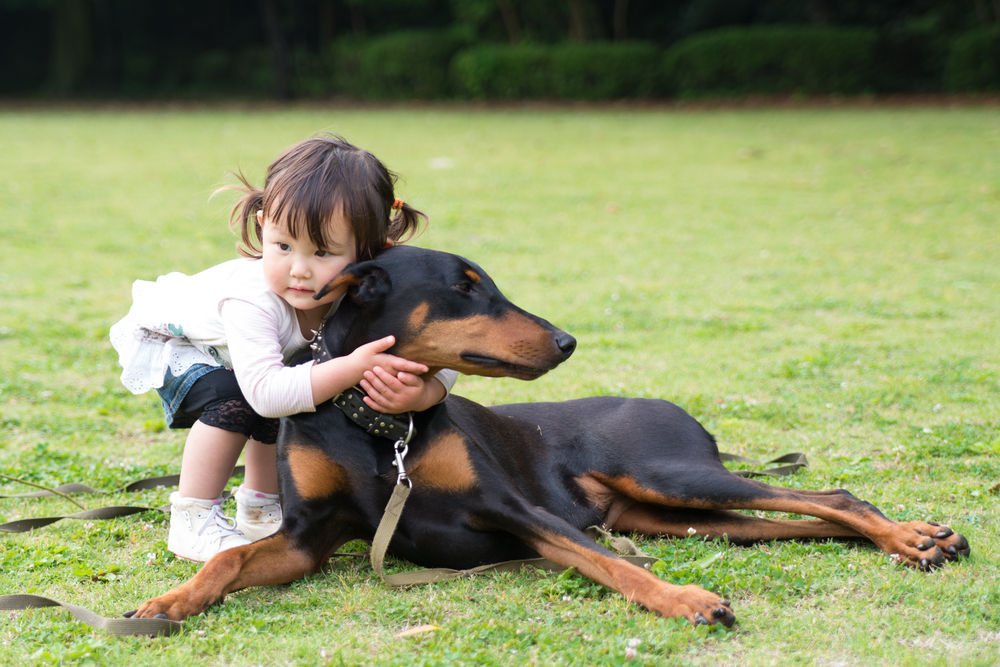
The truth
Because they’re intensely loyal, well-trained Dobermans are a wonderful addition to any family. Dobermans are one of the most intelligent breeds, and they’re also known as “Velcro dogs” due to their penchant for clinging to their favorite people. If your Dobie grows up alongside your children, he’ll be affectionate, protective, and unwaveringly loyal. In fact, the only real danger is that your Dobie might accidentally knock your child over during playtime, so you should train your Doberman to play gently to avoid mishaps. Additionally, you’ll want to teach your children not to roughhouse with your dog. Dobies are patient and gentle with children, but having his ears or tail pulled could provoke your dog into displaying aggressive behavior.
Myth #3: White Dobermans are exotic and desirable
The American Kennel Club (AKC) recognizes four standard color variations: black and rust, blue and rust, red and rust, and fawn and rust. White Dobermans aren’t recognized by the AKC, and their unusual coloring is due to a genetic mutation known as oculocutaneous — also called partial — albinism. Albino Dobermans typically have white or cream-colored coats, light eyes, and pink noses, lips, and paw pads.
The truth
Despite being an autosomal recessive trait, the gene responsible for albinism in Dobermans isn’t a rare one. However, that doesn’t prevent disreputable breeders from selling albino Dobies for a staggeringly high price. Unfortunately, albino Dobermans frequently have temperament issues, such as extreme fear of humans and aggressiveness, due to inbreeding. They’re also prone to health problems, and their pale coats mean they have an increased risk of developing melanoma.
Final thoughts
A member of the working group, Doberman pinschers are noble, intelligent, and protective. The breed came about when a 19th-century German tax collector named Louis Dobermann sought to breed an intimidating dog to join him on tax-collecting missions. In modern times, the Dobie has served as a dependable police dog, a heroic search-and-rescue worker, and even a therapy dog. Dobermans aren’t for everyone, but this oft-maligned breed isn’t the dangerous attack dog people believe he is. Finally, we’ve waded through the myths to find the truth: There are no bad dogs, only bad owners.


